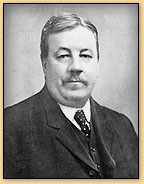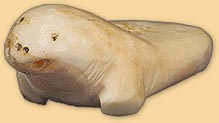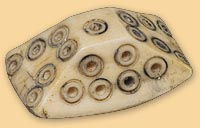 |
In order to map uncharted regions of Canada, the Geological
Survey
of Canada sent a succession of explorers to
Northern Labrador
and other regions of the Canadian Arctic
from the 1850s on.
 |
|
" Portrait of A. P. Low, 1929."
Albert Peter Low was commander of the Neptune expedition in 1903–1904.
Photo: A. P. Low
© Earth Sciences Information Centre (72071) |
They brought back examples of flora, fauna, rocks, minerals and
ethnographic objects collected from Inuit living in these regions.
Some of those objects include small items that look like toys and
miniatures. Among them are also tourist items created specifically for
barter between Inuit and their visitors. Collectors often referred to
these small barter objects as "curios."
Hudson's Bay traders, missionaries, doctors and RCMP officers also
added to the collection. They obtained curios while they worked in the
North. Doctors received little presents from grateful patients, while
RCMP officers bartered with Inuit on their patrols to distant camps
by dogsled or boat.

 |
Toy Seal, 1916
Area around Chesterfield Inlet, Nunavut
Ivory
CMC IV-C-1200
Collected by Danish anthropologist Christian Leden during his expedition
to the Keewatin
from 1913 to 1916
|
 |
In addition to the curios, Inuit created objects for their own use
which required both skill and an artistic sensibility. In the making
of games, amulets and fish lures, Inuit carved animals out of ivory.
They also embellished and decorated needle cases, combs, hair ornaments
and buttons; and dressed up dolls in left-over pieces of skin to make
playthings for girls. Copper Inuit decorated the ivory handles for bags
with elegant geometric patterns.
"Eskimo Ornament," 1880
Marble Island region, West Coast of Hudson Bay, Nunavut
Ivory
CMC IV-C-3438
1.5 x 3 x 2 cm
Collected by Dr. Robert Bell during fieldwork on behalf of the
Geological Survey of Canada
|
 |
 |
While Inuit clothing has been the object of much scholarly attention,
curios and other decorated objects from this period have been largely
overlooked. We hope that this selection from the Canadian Museum of Civilization
collection will stimulate further research and study in this area.
|